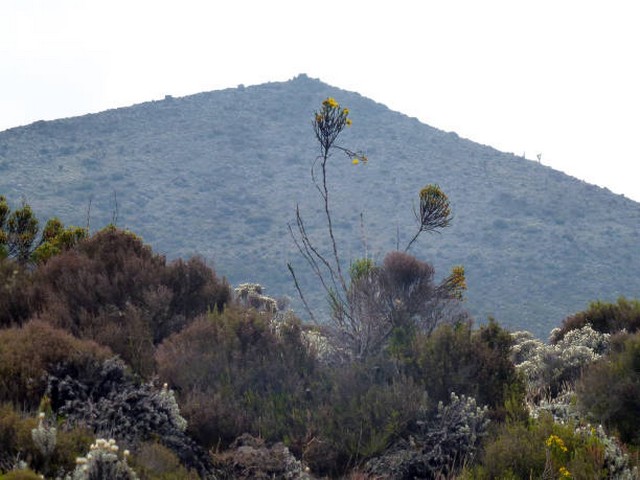How To Make Kilimanjaro Trekking Educational For Kids
Embarking on a trekking adventure up the majestic Mount Kilimanjaro can transform from a simple vacation into a profound educational experience for children. At Kilimanjaro Centre for Trekking and Ecotourism (KCTE), we understand the value of integrating learning with adventure. This guide will help you discover ways to enrich your child's mind while they climb one of the world's most famous mountains.
Why Choose Kilimanjaro for Your Family Adventure?
Mount Kilimanjaro is not just the highest peak in Africa but also a splendid classroom stretching above the clouds. The diverse ecosystems, ranging from lush rainforests to alpine deserts, offer endless lessons in geography, biology, and environmental science. What's more, the cultural encounters with the Chagga people, native to the Kilimanjaro region, provide a deep dive into anthropology and history.
Preparing Kids for the Trek: A Learning Journey Begins
Understanding the Mountain's Geography
Start with teaching your kids about the mountain's geography. Explain the different climatic zones of Kilimanjaro – from the cultivated lower slopes to the arctic summit. Kids can keep a journal documenting changes in vegetation and wildlife as they ascend, making the experience both interactive and educational.
Fitness and Health Education
Preparing for Kilimanjaro is an excellent opportunity for kids to learn about physical health and fitness. Discuss the importance of training, proper nutrition, and hydration. Engage your children in the training schedule, perhaps through hiking local trails to simulate the trekking experience.
During the Climb: Educational Themes to Explore
Flora and Fauna along the Trails
Kilimanjaro hosts a unique biosphere. As you trek through various ecological zones, point out different plant species and animals. Explain their adaptations to high altitude environments. This real-time biology lesson will captivate the curiosity of young minds.
Geological Wonders
Discuss the volcanic origins of Kilimanjaro. Teach children about volcanic cones and lava flows at various stops. This hands-on geology lesson is far more engaging than any textbook!
Cultural Encounters
Interactions with local guides and porters provide an immersive cultural experience. Encourage your kids to learn basic Swahili phrases to communicate and show respect. Such cultural exchanges enhance social studies learning and promote global awareness.
Astronomy Under Clear Skies
The clear, unpolluted skies at high altitudes offer perfect stargazing opportunities. Introduce your kids to basic astronomy by identifying constellations, planets, and discussing the universe. This not only fuels their imagination but also deepens their understanding of science.
Safety Tips: Keeping Education Fun and Secure
Ensure that your educational adventure remains safe by adhering to the following tips:
- Acclimatize Properly: Teach kids the importance of acclimatization to prevent altitude sickness.
- Stay Hydrated: Explain how dehydration affects the body and why drinking water is crucial.
- Follow the Guide's Instructions: Use this as a lesson in responsibility and listening skills.
Equip Your Kids with the Right Gear
Having the right gear is crucial for the comfort and safety of your children. Equip them with:
- Proper boots for rough terrains
- Layered clothing suitable for shifting weather conditions
- A comfortable backpack filled with essentials
Post-Trek: Reflecting and Learning
After descending, encourage your children to share their experiences and lessons learned. They could create a project, like a scrapbook or a digital presentation, to showcase their journey and educate others.
FAQs: Making Your Kilimanjaro Trek with Kids Enlightening
Q1: What is the best age for kids to trek Kilimanjaro?
While children as young as 10 have successfully summited, the ideal age is 12 and above, as older children are better able to handle the physical and mental demands of the trek.
Q2: How can I ensure my child stays motivated during the climb?
Set small, achievable goals, celebrate milestones, and keep the learning interactive and fun. Remind them of the great achievement awaiting at the summit.
Q3: Are there educational resources available for children trekking Kilimanjaro?
KCTE provides educational packets including wildlife checklists, simple Swahili guides, and ecological zone information to enhance the learning experience.
Q4: How long does the trek usually take, and is it safe for children?
The trek can take 6-8 days, depending on the route. Safety is our utmost priority, and KCTE ensures guided, well-paced climbs tailored to families with children.
Why Book Your Climb with Kilimanjaro Centre for Trekking and Ecotourism (KCTE)?
Choosing KCTE means not only embarking on an adventurous climb but also ensuring an enriching educational journey for your children. Our expert guides are trained in child-friendly practices and are keen to make learning fun and engaging. We prioritize safety, comfort, and education, making us the ideal choice for your family's Kilimanjaro adventure.
Conclusion: The Peak Awaits!
Climbing Kilimanjaro with your children is more than just physical achievement; it's a way to instill a love for nature, enhance knowledge, and create lifelong memories. At KCTE, we are committed to making every step of your journey enriching and safe. Contact us today to plan your educational trek on Kilimanjaro where adventure meets learning at every turn!




